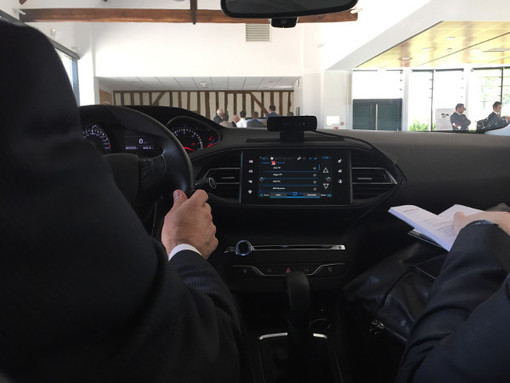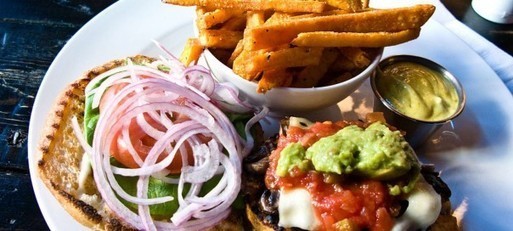The global beer industry faces its greatest challenge in 50 years. All at once, there is falling consumer demand, increasingly competitive products, heightened requirements by retailers and consumers, and tougher market access. This confluence of challenging developments is not merely creating temporary roadblocks for large beer manufacturers – it marks the beginning of a difficult era for the entire industry.
Trends in the world’s major beer markets are clear. In the U.S., beer’s largest market, production volumes stagnated between 2007 and 2014. In other key markets such as Germany, France and the UK, they fell by roughly 10 percent over the same period. The per capita consumption by Germans, who are some of the world’s biggest lovers of beer, has dropped by one-third since 1976. Reasons for this collapse include demographic changes, the emergence of alternative beverage categories like wine, cider and health-oriented drinks, tighter regulatory and taxation measures, as well as the continuing global economic slowdown. Although there have been exceptional growth rates and volume increases in many emerging markets in recent years, this is little consolation for large international brands, since the majority of these markets are dominated by local brewers.
Too little volume, too many products
Breweries are not only battling volume issues. Competitive pressure has intensified dramatically in the premium and super premium segments, which have experienced strong growth and retained attractive profit margins. The fact that economies of scale are less important in these profitable sectors makes it easier for niche providers to compete successfully.
All along the value chain, product innovation has increased rapidly. In the U.S., craft brewers are now officially beating the big beer makers. In an environment where overall beer production rose just 0.5 percent in 2014, output from small brewers surged by 18 percent, giving them an 11 percent volume share of the $100 billion beer market.1 This trend is also occurring in Europe. In Italy, there were eight times more new beer products on retailers’ shelves in 2012 than in 2007; in the Czech Republic, there was a 5x increase, in Spain a 4x increase and in France 3x. While consumers in the UK have been slower to catch onto this trend, they began making up for lost time last year. In 2014, there were twice as many new beer products in the UK as in 2013. Germany, which is home to the world’s oldest active brewery, was also slow to embrace the craft beer trend, due to the combination of a saturated local producer base and the country’s “Deutsches Reinheitsgebot,” or purity law. Drafted in 1516, it states that beer can only be made with four items: malted barley, hops, water and yeast. Much like in the UK, 2014 was a year in which German beer consumers embraced the new, welcoming production by several U.S. craft beer makers and experimenting with home-grown innovations.
Meanwhile in the lower price segment, private label products are grabbing an ever greater market share – at the expense of incumbent mainstream beer brands. To fight back, German lager manufacturers have raised the share of their revenues coming from discounted sales from roughly 20 percent to more than 70 percent over the last decade. It’s now to the point where German consumers consider these discounts and promotions to be normal. This is part of the reason why – adjusted for inflation – retail prices for beer in Germany are half of what they were in 1993. Although this has taken a toll on margins, it has succeeded in stemming the decline in consumption, at least for the moment. In 2014, German breweries saw their first increase in beer volumes in seven years – up 1 percent over 2013.
New distribution challenges
Retail stores such as supermarkets and large chains of discounters or convenience stores are becoming an increasingly important distribution channel for beer manufacturers, at the expense of bars and specialty stores. This presents several challenges. One is further pressure on manufacturers’ prices and margins, since retail stores deliver lower profit margins even when they are not discounting. At the same time, retailers are putting greater demands on manufacturers, insisting upon ever smaller and more frequent product deliveries in order to reduce their warehousing costs. They are also expecting manufacturers to come up with new and innovative merchandising units, such as movable shelves that can be rolled into the store fully stocked, thus minimizing the store’s cost of replenishment.
Moreover, since retailers are eager to avoid the revenue declines that result from gaps in inventory, they are making order fulfillment rate a key factor in assessing the quality of a relationship with a brewer. A retailer will not hesitate to go elsewhere if a manufacturer cannot supply sufficient goods for peak demand points and promotional initiatives. As a result, breweries must learn to operate with greater flexibility and an enhanced focus on minimizing costs.
Channel shifts are also forcing beer makers to build new skills in category management. As shoppers move toward specialized formats such as convenience stores, manufacturers must find a new balance between volume and price. The large-sized packs of beer that are well-suited to hypermarkets are not relevant for convenience seekers who may be looking for a quick meal and beverage combination. Many shoppers picking up a ready-to-eat meal find pleasure in spending a bit of extra money on a beer or cider “treat” to go along with it. Manufacturers need to appeal to these consumers with both a smaller pack size and premium positioning.
The wholesale trade, too, is in the midst of change. Beer manufacturers are reacting to this with greater vertical integration, ie. taking over specialist wholesalers, which further accelerates the complexity of their supply chain and increases capital intensity.
Operational and organizational change
After decades of regular volume growth, brewers are hardly prepared for these new challenges. Companies must recognize that their infrastructures and operational processes may no longer correspond to current market conditions. Product teams, for instance, that are used to stable portfolios may have a hard time keeping up with the swift and steady product launches of more agile manufacturers. Purchasing practices that are geared toward locking in a certain price rather than creating product availability are not likely to be flexible enough to react quickly to unexpected surges in consumer demand.
Manufacturing sites that are designed for the production of large volumes at low cost are unsuited to niche products that require small batches, fast retooling processes, and perhaps highly manual repackaging into store-ready merchandising units. And finally, the logistics departments of legacy breweries may struggle with the increased requirements of serving both the highly fragmented trade channel and the evolving proliferation of convenience stores in urban areas. Retailers today are looking for partners who can help them with greater specificity – bringing the right beer to the right outlet at the right time. The much simpler process of doing large volume distribution to central customer warehouses may soon be a thing of the past.
In addition to these operational issues, brewers face organizational ones. The global expansion and M&A activities of past years have often resulted in structures that resemble loose confederations of local businesses rather than genuine multinationals. Stronger central management would achieve greater economies of scale and skill. Yet relinquishing local control also has disadvantages – most importantly, the risk of losing a close connection to the consumer.
To overcome these structural deficits, some breweries are following in the footsteps of successful FMCGs (fast-moving consumer goods companies) such as Unilever, L’Oreal, Reckitt Benckiser and Colgate-Palmolive. They are searching for cost savings in procurement, manufacturing and marketing by adopting both regional and global organizational models. And they are striving for far more uniform and integrated ways of meeting the challenge of catering to consumers in a highly dynamic and demanding multichannel environment. This requires a closer cooperation between corporate functions and a far-reaching transformation of mindsets and behaviors along the entire value chain. The jury is still out on which model will ultimately prove most successful for beer companies; a great deal of experimentation is still needed.
Innovation as a competitive advantage
Across the globe, consumers are increasingly drawn to beer that skews either to the high end or the low. Market trends over the last five years reveal volumes shifting away from core lager products and toward premium beers and/or value-based brands. In mature markets, such as Western Europe, the U.S. and Australia, tastes are trending toward premium beer, with the exception of Spain, which has been hard hit by the economic crisis. There, we see a greater shift toward value beers. Even in some high growth emerging markets such Brazil, where core beer brands are still growing, there are fundamental shifts favoring the premium segment.
In this environment, some breweries are building innovation capabilities into the fabric of their organization. One company, for instance, has created a relentless focus on the premium sector in Western European markets, which has driven both the sector’s top and bottom line growth, even amid volatile market conditions. Innovation in these markets has been such a priority that more than half of the company’s new beers in the last two years have been launched in Europe, with 30 percent of that revenue coming from premium brands. Much of this success has come from an emphasis on local markets, where regional innovation and supply chain teams have focused on developing the agility necessary to deliver on scale innovation. Their efforts have centered on giving wide availability and high visibility to the company’s new beers. In one instance, a new product was available in 4,000 bars and restaurant outlets in the UK within six months. Other initiatives focused on one-month trials with a network of pubs
In addition to product innovation, there is also the need for continuous creativity in the areas of packaging, ecommerce, pricing and retail availability. As the retail channel becomes dominant, it is increasingly important to work with retailers to develop “shelves of the future,” compelling beer and food combinations, and effective point of purchase displays. Availability is more than just being everywhere – standing out is a key driver of sales.
So, too, is on-pack sampling, which drives the trial and purchase of new products. One company found that between 40 and 60 percent of consumers who purchased the sample pack also bought the full sized package. Finally, brewers should have the right pack types at the right consumer price points. Pricing is a key lever in every segment –a signal of a premium offering or in the mainstream segment, a means to stay competitive and sustain market share.
Success stories
Recent actions by various players in the beer industry demonstrate the power of taking a cross-functional approach to operational, supply chain and innovation improvements. One company, a European brewer, optimized their product development process to increase their competitiveness in the premium segment. They established a standardized innovation process and accelerated the market launch of those products by tightly coordinating sales, marketing, logistics, manufacturing and procurement activities. The company also utilized its marketing data better in order to precisely determine success quotas and volume effects. Thanks to more accurate and granular information on supply and demand, the organization is now getting more offerings to the market faster, at little or no incremental cost.
Another player started a broad-based project to improve cooperation with retail customers. It established dedicated teams to manage each key retailer account relationship, and launched an extensive customer collaboration effort. As a result, the company was able to go far beyond mere data exchange. It initiated joint planning and forecasting activities to provide earlier warnings of true consumer demand. Such co-operations, or “integrated business planning,” are not new in the consumer goods sector, but are increasingly being adopted by the beer industry.
A third player embarked on a design-to-value program to increase their margins in the lower price segment. The manufacturing department had launched several value-engineering initiatives in the past, but these had met with limited success since many of the savings ideas were not embraced by the marketing department for fear of negative consumer impact. This time, by engaging marketing in the process from the beginning, establishing joint cost-reduction targets and ensuring that all opportunities were validated with consumer tests, the adoption rate of cost-reduction initiatives was significantly increased.
These examples illustrate that there is no one-shot solution for the numerous challenges faced by the beer industry. However, leading companies are beginning to apply a carefully balanced cocktail of changes. They are coordinating their commercial, manufacturing and supply chain functions to deliver solutions that suit the precise tastes of different markets and customer segments, without losing sight of their operational models. These are still early days, but the top and bottom line effects on these businesses have been remarkably refreshing.
Image credit: http://www.flickr.com/photos/21300369@N06/3665434251

















